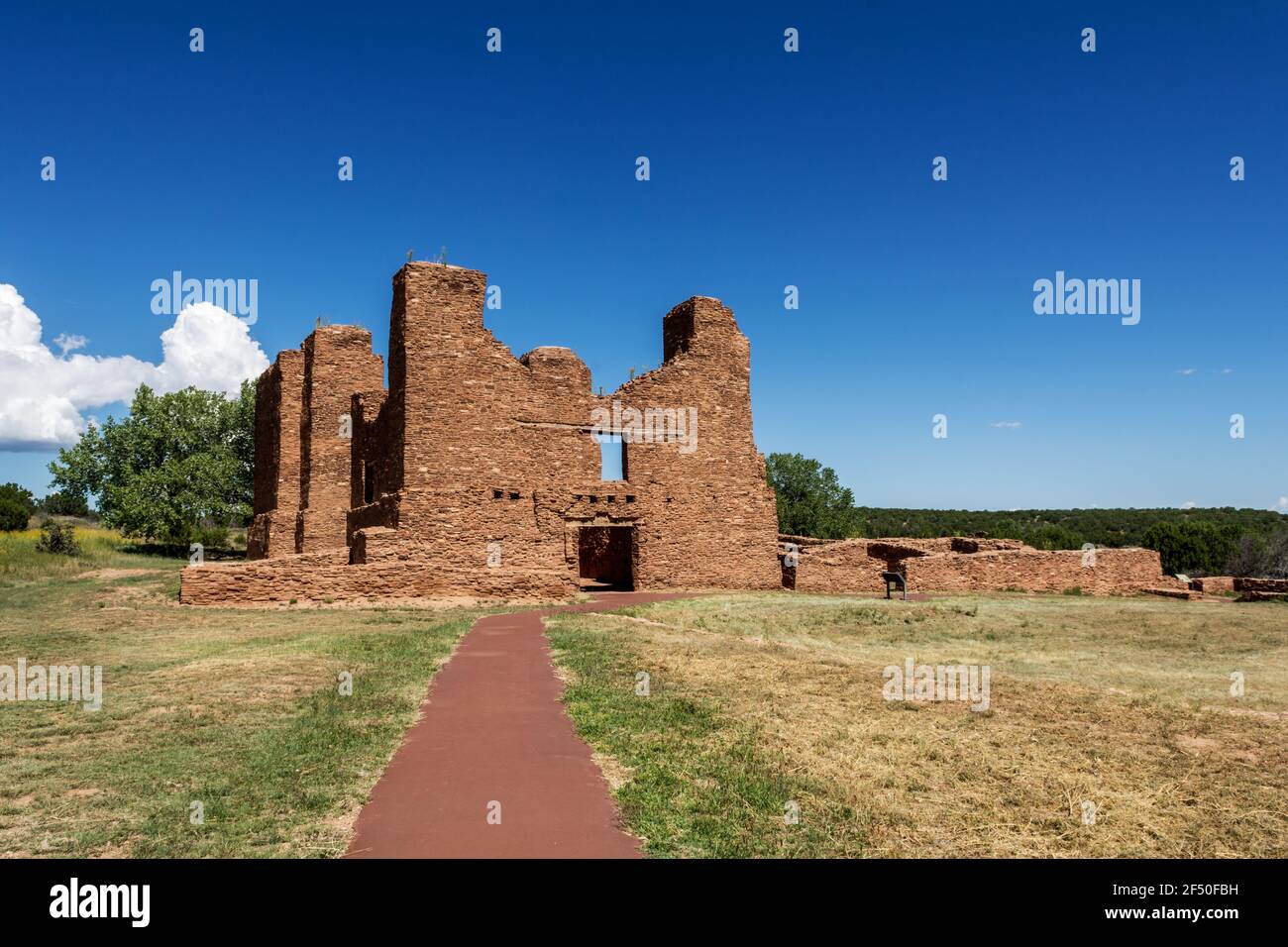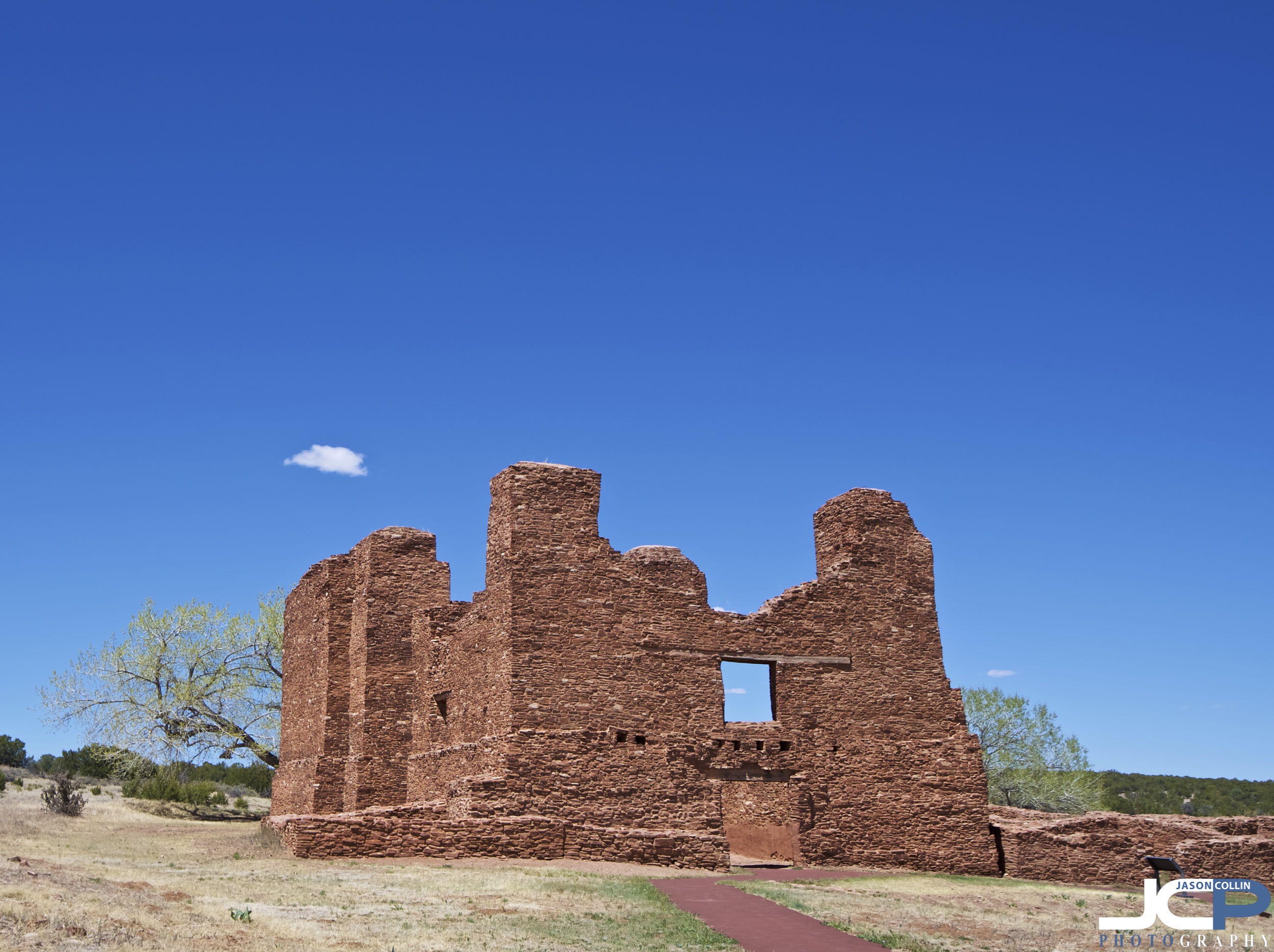
Stone Sentinels of Time: Unearthing the Enduring Legacy of Quarai Mission, New Mexico
In the vast, sun-drenched expanse of central New Mexico, where the Manzano Mountains cast long shadows over the high desert, stand the silent, stoic ruins of Quarai Mission. More than just a collection of crumbling stone walls, Quarai is a profound testament to a tumultuous era of cultural collision, fervent faith, and ultimate abandonment. It is a place where the whispers of Franciscan friars mingle with the echoes of ancient Pueblo songs, where the grandeur of Spanish imperial ambition met the harsh realities of a unforgiving land and the resilience of an indigenous people.
Today, Quarai is one of three major sites comprising the Salinas Pueblo Missions National Monument, a triumvirate of historical jewels that preserve the remnants of 17th-century Spanish missions and the pre-contact pueblos they sought to convert. While each site – Abó, Gran Quivira, and Quarai – tells a unique chapter of this complex story, Quarai stands out for the dramatic beauty of its monumental church and the palpable sense of history that permeates its every stone.
A Desert Oasis and Ancient Roots

Before the arrival of the Spanish, the Quarai Pueblo, a Southern Tiwa-speaking community, thrived in this fertile valley. Fed by springs that made agriculture possible in an otherwise arid region, the pueblo was a hub of life and culture for centuries. Its inhabitants cultivated corn, beans, and squash, crafted intricate pottery, and maintained a rich spiritual life centered around their kivas – subterranean ceremonial chambers. Their society was well-organized, their traditions deeply rooted in the rhythms of the land and the wisdom passed down through generations.
The Quarai people, like many other Pueblo communities, had developed sophisticated systems for survival in the challenging desert environment. Their architecture, social structures, and agricultural practices were finely tuned to their surroundings. Life was communal, spiritual, and deeply connected to the earth, a stark contrast to the individualistic, hierarchical society the Spanish would soon impose.
The Arrival of the Conquistadores and the Friars
The late 16th and early 17th centuries marked a seismic shift in the history of the American Southwest. Driven by a potent blend of "God, Gold, and Glory," Spanish conquistadores and Franciscan friars pushed northward from New Spain (Mexico), seeking new territories, mineral wealth, and, crucially, souls to save. Juan de Oñate’s expedition in 1598 formally established the province of New Mexico, paving the way for the "spiritual conquest" that would follow.
For the Franciscans, New Mexico represented a vast mission field, an opportunity to bring Christianity to what they perceived as "heathen" populations. The Pueblo peoples, with their settled agricultural communities, were seen as ideal candidates for conversion and assimilation into the Spanish colonial system. Missions were not merely churches; they were the fulcrum of colonial control, intended to transform indigenous societies into replicas of Spanish villages, complete with European governance, agriculture, and, of course, religion.
The Building of a Monument: Nuestra Señora de la Purísima Concepción de Cuarac
It was around 1629 when Fray Esteban de Perea formally established the mission at Quarai. Under his guidance, and later that of Fray Juan Gutiérrez de la Chica, the monumental church of Nuestra Señora de la Purísima Concepción de Cuarac began to rise from the desert floor. This was no modest chapel; it was an ambitious undertaking, a statement of faith and power in a remote wilderness.
The Quarai church, built primarily of red sandstone quarried from nearby hills, is a truly awe-inspiring structure, even in ruin. Its walls, in places six feet thick and once soaring 40 feet high, enclose a massive nave, a testament to the immense labor involved. The convento (monastery) complex attached to the church housed the friars, provided living quarters, a kitchen, workshops, and storage rooms. It was designed to be self-sufficient, a miniature European enclave in the heart of Pueblo country.

The construction of such a grand edifice was, however, not a voluntary act for the Pueblo people. They were pressed into service, their labor diverted from their own fields and homes to quarry stone, haul timber from distant mountains, and construct buildings that symbolized the very foreign power that now dominated their lives. This forced labor, coupled with the introduction of new diseases and the suppression of their traditional spiritual practices, created deep resentions that simmered beneath the surface of the mission’s apparent success.
A Clash of Worlds: Faith, Resistance, and Syncretism
Life at Quarai Mission was a complex tapestry of adaptation, resistance, and uneasy coexistence. The friars, dedicated to their spiritual mission, sought to eradicate traditional Pueblo beliefs and replace them with Catholicism. Kivas were often desecrated or filled in, traditional dances forbidden, and native religious leaders persecuted.
Yet, the Pueblo people were not passive recipients of this new order. While many outwardly conformed to Spanish practices, attending mass and participating in Christian rituals, they often maintained their traditional beliefs in secret, practicing their ceremonies in hidden kivas or incorporating Christian elements into their own complex cosmology. This phenomenon, known as syncretism, allowed them to preserve their cultural identity even as they navigated the demands of the colonial regime. A striking example of this cultural persistence at Quarai is the presence of an excavated kiva within the convento courtyard itself, a powerful symbol of the Pueblo people’s determination to maintain their spiritual core even under direct Spanish supervision.
Beyond religious clashes, there were economic tensions. The encomienda system, which granted Spanish colonists control over indigenous labor and tribute, placed immense burdens on the Pueblo communities. They were required to pay tribute in corn, blankets, and other goods, and to provide labor for Spanish farms and construction projects, often leaving their own fields untended. This economic exploitation, combined with the friars’ demands for labor and resources, led to periods of famine and hardship.
The Unraveling: Drought, Disease, and Raiders
The delicate balance of life at Quarai, and indeed across the Salinas basin, began to unravel in the mid-17th century. The region was particularly susceptible to environmental fluctuations, and a series of severe droughts gripped New Mexico in the 1660s and 1670s. Crop failures led to widespread famine, weakening the Pueblo population.
Compounding this natural disaster were devastating epidemics of European diseases – smallpox, measles, and influenza – to which the indigenous people had no natural immunity. Entire communities were decimated, their populations plummeting. The loss of life was catastrophic, further eroding the social fabric and spiritual confidence of the Pueblos.
As if these challenges weren’t enough, the region was increasingly plagued by raids from nomadic Apache groups. Weakened by famine and disease, and often lacking the protection of the Spanish who were themselves struggling, the Pueblos became easy targets. The Apache sought food, horses, and captives, adding another layer of terror and instability to an already desperate situation.
By the mid-1670s, the combined pressures of drought, disease, and relentless Apache raids proved too much. The Quarai Pueblo, once a vibrant community, was on the brink of collapse. Around 1677, the surviving inhabitants, facing starvation and constant danger, made the agonizing decision to abandon their ancestral home. They migrated south, seeking refuge with other Tiwa-speaking communities near El Paso del Norte (modern-day Ciudad Juárez, Mexico). The grand church, a symbol of so much hope and so much suffering, was left to the elements, its bells silenced, its altars empty.
A Brief Respite and Final Abandonment
The abandonment of Quarai was part of a larger pattern across the Salinas basin. Gran Quivira and Abó suffered similar fates. This exodus of the Pueblo people from the Salinas missions directly preceded the Pueblo Revolt of 1680, a coordinated uprising that saw the Pueblo peoples successfully expel the Spanish from New Mexico for 12 years. While Quarai was abandoned before the revolt, the conditions that led to its demise were symptomatic of the broader grievances that fueled the rebellion.
After the Spanish "reconquest" in 1692, the Salinas missions were never reoccupied. The demographic and environmental shifts had been too profound. The magnificent structures, once centers of bustling activity, slowly succumbed to the ravages of time and weather, becoming the haunting ruins we see today.
Rediscovery and Preservation
For nearly two centuries, Quarai lay largely forgotten, its red sandstone walls blending into the landscape, its story buried beneath layers of desert dust and overgrown vegetation. In the late 19th and early 20th centuries, archaeologists and historians began to take interest in these "lost" missions. Landmark excavations in the 1930s and later in the 1960s and 70s began to systematically uncover the pueblo and mission structures, revealing the incredible story of Quarai.
In 1980, Quarai, along with Abó and Gran Quivira, was incorporated into the Salinas Pueblo Missions National Monument, recognizing their immense historical and cultural significance. The National Park Service now meticulously preserves these sites, ensuring their survival for future generations.
Visiting Quarai Today: A Journey Through Time
Today, a visit to Quarai is an immersive journey into the past. As you approach the site, the massive red walls of the church rise dramatically from the high desert, a stark and beautiful silhouette against the azure New Mexico sky. The silence is profound, broken only by the whisper of the wind through the sagebrush and the occasional call of a desert bird.
Walking through the nave of the church, its roof long gone, you can gaze up at the open sky, imagining the ceremonies that once took place here. The sheer scale of the building is humbling, a testament to the ambition of the friars and the arduous labor of the Pueblo people. In the convento courtyard, the excavated kiva offers a poignant reminder of the enduring spiritual heart of the indigenous community. Interpretive signs guide visitors through the ruins, offering insights into the daily life of both the friars and the Pueblo inhabitants, and explaining the intricate history of the site.
A small visitor center provides further context, displaying artifacts found during excavations and offering detailed historical information. Beyond the mission walls, the mounds of the unexcavated pueblo stretch into the distance, hinting at the vastness of the ancient community that once thrived here.
The Enduring Legacy
Quarai Mission is more than just a historical ruin; it is a powerful symbol of the complex and often tragic encounter between two vastly different cultures. It speaks to the resilience of indigenous peoples in the face of colonial oppression, the fervent zeal of religious missionaries, and the unforgiving power of the natural world.
As the sun sets over the Manzano Mountains, casting a golden glow on the red sandstone walls of Quarai, one cannot help but feel a profound connection to the past. The spirits of those who lived and died here – friars, Pueblo families, Apache raiders – seem to linger in the quiet air. Quarai stands as a stone sentinel of time, a place where history breathes, reminding us of the enduring power of human spirit, faith, and the indelible marks left upon the land by those who came before. It is a place that compels reflection, inviting us to ponder the lessons of conquest, cultural survival, and the persistent echoes of a forgotten world in the heart of the New Mexico desert.


